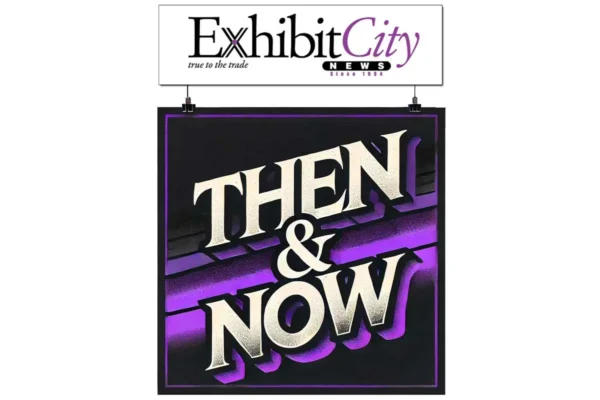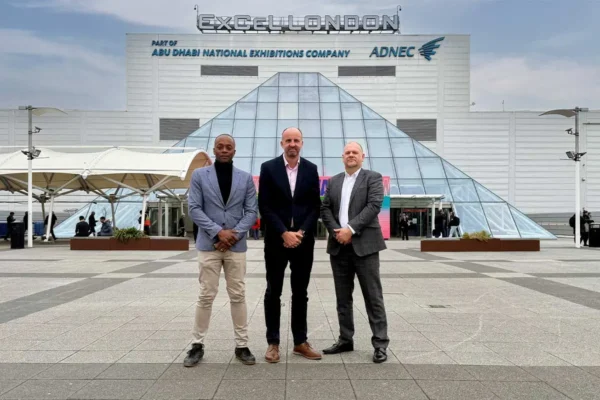By Eric Newkirk, President, Event Production Network
Exhibitors equate a tradeshow with any other type of real estate. How does your booth stand out on the floor? Location, location, location, right? For sure, proximity to your audience matters. But in today’s marketplace, there is a much shorter answer: LED screens. This technology has grown up quite a bit in the last five years, leaping forward in terms of quality and cost-effectiveness. It can level the playing field when you are stuck with a subprime spot of real estate on the tradeshow floor, reduce your printing expenses for a “greener” impact on your budget and the environment, and allow you to reach all your prospects in a more thoughtful way. And it can deliver an unforgettable presence on limited energy. (Power remains one of the most expensive variables at a tradeshow.)
Talk To Them
Foot traffic is also essential at a tradeshow. Once you have the flow of people, other good things—like prospects, appointments, and sales—will follow. Being noticed, however, is the trick. The best spots at a tradeshow are either picked early or are out of your budget. John Dubil of AVFX in Boston, Massachusetts, will typically recommend a one-two punch depending on the answer to one very important question. Someone from his team will stand alongside a client at the entrance of the tradeshow floor and ask: Can we see your booth? If the answer is no, then a more involved course of action begins. “That’s our competition over there,” says Dubil as his team troubleshoots a resolution.
“How do we get their foot traffic over here? My first question is how high can we go from floor to ceiling?” Today, LED technology offers very little restrictions, which creative types at AVFX love. It’s a tool that you can bend and see through. The options are almost limitless, but it wasn’t that way a few years ago. There was a time when LED tiles were like looking through a fence, causing eye fatigue. Nowadays, LED tech’s low carbon footprint is drawing less power and capturing more of the print costs, in addition to creating a memorable experience on a budget. It also sets the stage, or trade floor, to capture more attention from attendees.

Near Field Communications (NFC), coupled with LED screens, can be the second part in Dubil’s one-two punch. Imagine having the ability to speak directly to your prospects—all nine audiences—in the same space and place. If the tradeshow allows for chips in the badges, which can segment the audience, you are able to provide a deeper interaction with prospects. Have you ever walked by a shoe store, and suddenly an ad for shoes pops up on your cellphone? Yup, same tech—just a slightly different application for tradeshows. “If they are wearing a badge, you can tweak the message and stand out among your competitors who are to your left and right,” Dubil says.
Elevate Above The Rest
Although LED screens are invaluable at tradeshows, budgets are paramount. From 25 feet away, an image on an LED screen can look sharp and clearly defined. However, when attendees are three feet away, the same image may appear to break apart into a cluster of dots. The challenge can be addressed by opting for a lower pitch—the amount of space between pixels that constitute the image—which produces a higher resolution. The next obstacle, however, is expense. Higher resolution means a higher price tag for your tradeshow investment.
Jeff Studley, founder of CPR MultiMedia Solutions in Gaithersburg, Maryland, begins the conversation by recommending block lettering, as opposed to script, to work better with lower resolutions on a budget. Then, he reveals one of his best tricks for a tradeshow booth. For the last three years, Studley’s AV teams have offered cost-effective “headers” that make any tradeshow booth stand out, no matter where it is located on the floor. The headers are single-tile, one-and-a-half-foot tall LED bars that sit atop the physical structure of a booth. Sometimes, the tiles show downward arrows pointing to the booth with a simple message, such as “Come See [insert brand here]” to draw attention. Other times, the slender-but-effective screens scroll a question or statement that would entice a target audience to generate more foot traffic to the booth.
“The headers take advantage of the LED technology,” Studley says. “It’s sizable—you can make the screens bigger or smaller—depending on the booth structure. It’s not like a printed banner you would typically have in a booth because you can show an infinite number of messages in the same space every 10 to 15 seconds. It’s like having four signs instead of one sign that you are stuck with. LED’s ability to change really gives it a lot of flexibility and functionality.” There are several reasons why more companies are working with AV partners to incorporate an LED strategy at their booth. “The headers are also a big cost savings,” he adds, “because it allows you to get your message across in an eye-catching manner without investing in a full-resolution video.” (Eric Newkirk is president of Event Production Network, a group of 27 quality, audiovisual providers from across North America, as well as vice president of design and creative at CEAVCO, an AVFX company, in Wheat Ridge, Colorado.)































